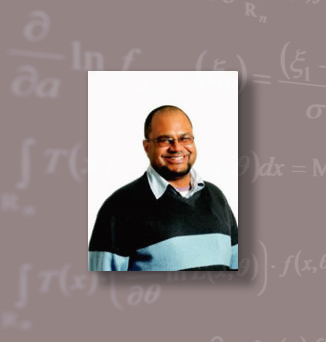Professor Ebrahim Momoniat awarded Vice-Chancellor's Research Award for 2016
- Wits University
The Vice-Chancellor’s Research Award is the University’s most prestigious award for research.
Every year, Wits University honours one of its academics for exceptional research in their field.
 The Vice-Chancellor’s Research Award is the University’s most prestigious award for research. The purpose of the award is to stimulate research and research related scholarly activities by acknowledging and rewarding a quite exceptional worker who has been engaged in research and more general scholarly activity at the University over a sustained period of years. In other words, this is not a prize for a single discovery, invention, publication or artefact, however remarkable.
The Vice-Chancellor’s Research Award is the University’s most prestigious award for research. The purpose of the award is to stimulate research and research related scholarly activities by acknowledging and rewarding a quite exceptional worker who has been engaged in research and more general scholarly activity at the University over a sustained period of years. In other words, this is not a prize for a single discovery, invention, publication or artefact, however remarkable.
This year, the VC’s Research Award was awarded to Professor Ebrahim Momoniat, Assistant Dean Research and Deputy Dean: Faculty of Science, School of Computer Science and Applied Mathematics. Wits Communications spoke to Momoniat, who is currently on a research visit at Texas A&M University in College Station, Texas, in the United States.
Why, do you think, did you receive the VC’s research award for 2016?
I have been fortunate to have started publishing my research since my MSc in a field that is at the intersection of Mathematics, Applied Mathematics, Physics and Engineering. My research interests overlap several areas with differential equations that model thin film fluid flow at the centre of these interests. The differential equations that model these flows are highly nonlinear, degenerate and require special analytical and numerical methods for their solution. In addition to symmetry methods, I have investigated numerical methods that solve these problems.
A distinguishing feature of my research is that I combine both symmetry and numerical methods to solve complex nonlinear partial and ordinary differential equations. I have ensured that the solutions that are found are physically meaningful and relate back to the original problem.
Thin film flows are important in industrial and medical applications. In industrial applications thin film flows are important in coating flows. An example which supports this in the medical field is the mathematical modelling of a thin layer of mucus in the lungs. Another interesting mathematical model is the deposition of medication as a thin layer of surfactant that is deposited in the lungs when one makes use of an asthma pump.
I have also published extensively with world leaders in their respective fields from diverse countries such as the US, Scotland, India, Pakistan and Iran. I have published extensively with my postgraduate students. Publications with my students have had a major impact on diverse fields such as astronomy, symmetry analysis, computational mathematics, mathematical inequalities and stability analysis. This impact is measured by the citations of the articles as well as the high impact journals in which the articles themselves are published.
What are you working on at the moment?
My future research involves extending the mathematical models we have derived to problems involving viscoelastic fluids and piezoviscous fluids. For these problems, the viscosity of the fluid depends on pressure. These fluids are very important in problems involving the lubrication of bearings. Journal bearings and rolling contact bearings, in particular, are very important in industrial applications. The partial differential equations that result from these mathematical models will be a system of coupled equations that are highly nonlinear. These mathematical models will be investigated using both analytical and computational methods.
What is applied mathematics used for, and what impact does your work have on industry/society, and/or daily life?
Applied Mathematics is an extremely exciting field. It deals with finding practical solutions to a wide range of problems, including the mechanics behind how autonomous cars function; understanding fluctuating fish populations to assist fisheries in harvesting sustainably and working out problems and models around the capturing and storage of CO2. Mathematics is the framework we use to describe the physical problems we face as a society; Applied Mathematics is a means of solving such problems to the betterment of all.
What are you working on in the US on the research visit?
I am working on problems involving viscoelastic fluids and piezoviscous fluids and their applications to industrial problems. The mathematical modelling of these problems is very challenging as there are not many experimental results which may be used as a means of comparison when we obtain solutions describing the behaviour of certain fluids. Some of the fluids we are investigating are termed “smart materials” because of their various responses to pressure and temperature variations. The impact of these fluids on industry is enormous due to the time and cost-saving in wear and tear on heavy machinery they are known to improve upon.
What does receiving the VC’s Research award mean to you?
It is an acknowledgement of the many years of commitment and sacrifice needed so that I may publish articles of a high standard with my collaborators and my postgraduate students. I am very appreciative of the support I have received from the University over the past few years. To do high-quality research is not an individual achievement. There are many unacknowledged people in Schools, Faculties and the University administration who make good research possible. An award like this is an acknowledgement of their support and commitment.
